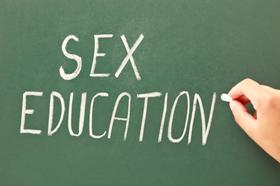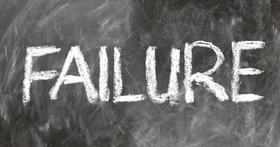As our nation’s politicians and policymakers look for ways to improve America’s public education system, the teaching institution is coming under direct fire. From conducting background checks on teachers to holding instructors accountable for students’ lackluster test scores, the entire foundation of our education system is being challenged.
Interestingly, a model for improving the quality of our teachers may already exist in the Teach for America program. This is a nonprofit organization that recruits high-achieving college graduates to teach for two years in low-income schools. Teach for America teachers do not have to undergo the traditional credentialing process; they receive “boot camp” training and then are given full responsibility for a classroom of students.
Yet despite their lack of traditional teaching credentials, Teach for America teachers are often more effective than their veteran teacher colleagues at improving student performance. In part, this success can be attributed to the rigorous analysis that the organization performs of its teachers.
This video offers some pros and cons of the Teach America experience.
How Teach for America Measures Performance
For the past decade, Teach for America has analyzed the profiles of its teacher applicants and the test scores of students in an ongoing attempt to identify the traits that the best teachers have.
Teach for America’s internal analyses identify a teacher as one of the “best” if the teacher moves his or her students’ test scores one and a half or more years ahead of their previous year’s scores. The Atlantic reports that “in 2007, 24 percent of Teach for America teachers moved their students one and a half or more years ahead, according to the organization’s internal reports. In 2009, that number was up to 44 percent.”
The numbers are not foolproof, as the tests administered vary from state to state, and in some states where the given tests were not rigorous enough, Teach for America has designed its own tests. Nonetheless, the numbers suggest that Teach for America manages to recruit a number of teachers who are highly successful at improving student learning, and they are strengthening their ability to identify and recruit these “superstar” teachers.
Indicators of Teacher Success
Teach for America has devoted a great deal of energy to the task of examining the applications they’ve received from prospective teachers and searching for applicant characteristics that correspond with success in the classroom. The organization has identified a number of traits that they have found to predict success as a teacher:
This video offers a look at the Teach America review process.
A track record of achieving large, measurable goals
College students who are involved in extracurricular activities and who take leadership roles in those activities are among the most likely to produce impressive gains in student learning when they become teachers. Grade point average is also a good indicator of the potential teacher’s ability to pursue and achieve goals.
Overall life satisfaction
Those applicants who report that they are “very content with their lives” are “43 percent more likely to perform well in the classroom than their less satisfied colleagues,” reports the Atlantic.
Ability to persevere in the face of obstacles
Perseverance – or what some call “grit” – is a trait that Teach for America’s directors have come to believe is crucial for successful teachers. In a 2009 interview with the New York Times, Teach for America founder and chief executive Wendy Kopp explained that one of the most important qualities a successful teacher must have is “the instinct to remain optimistic in the face of a challenge.”
What Can Public Schools Take Away from the Teach for America Model?
The success Teach for America’s instructors have enjoyed in the classroom can certainly be adapted by our existing educational system. There are several elements of the Teach for America model that can improve the performance of all public school teachers.
Evaluate teacher performance
Teach for America tracks test score data for 85 to 90 percent of the students who are taught by its teachers, and the organization links test score data to each individual teacher. Test score data are the basis for evaluating each teacher’s effectiveness.
Adopting the practice of evaluating teachers based on their students’ test scores is controversial. Teachers’ unions have historically opposed linking student test scores to teacher evaluations, arguing that standardized test scores cannot accurately reflect all that occurs in a classroom throughout the course of a year. In her Atlantic article, Ripley acknowledges this criticism, but asserts that “in desperately failing schools, where most kids lack basic skills, the only way to bushwhack a path out of the darkness is with a good, solid measuring stick.”
The public school system in Washington, D.C. is pioneering a new approach to teacher evaluations this year that seems to incorporate some of the lessons from Teach for America’s Success. Under D.C.’s new system, every faculty and staff member will receive a score at the end of the year that assesses performance.
For teachers whose students take standardized tests, 50% of the score will be determined by how well the teacher improved his or her student's test scores from the last scores on record. The other 50% of the score will be based on classroom evaluations of the teachers conducted by school administrators.
This video offers tips and suggestions for the Teach America interview.
Identify traits of most successful teachers
If public school systems begin to embrace and accept the idea of quantifying teacher performance based on test scores, they can then take another page from Teach for America’s handbook by analyzing data from classroom observations and working to identify the habits and traits of the teachers who are most successful at improving student performance.
Refine and re-evaluate teacher hiring processes
Finally, if public schools want to work to increase the numbers of qualified teachers they place in their classrooms, they can learn from Teach for America’s passion for analyzing and refining its own hiring processes. Teach for America directors use the data that they collect to continually rework the algorithm they have developed for determining which applicants are most likely to be successful classroom teachers.
If public schools were to start tracking teacher performance and analyzing which aspects of the hiring process were most predictive of future classroom performance, they could use that information to improve the teacher hiring process. This would improve the chances of hiring those applicants who are most likely to be superstar teachers.
While there is much controversy surrounding changing today’s educational infrastructure, evaluating our instructors and holding them to higher standards can only result in benefits for our country’s children. If Teach for America’s instructors, who only receive “boot camp” training instead of an official teaching certification education, can outperform veteran teachers, why can’t all of our teachers become superstars?
Questions@ Contact us on Facebook. @publicschoolreview












